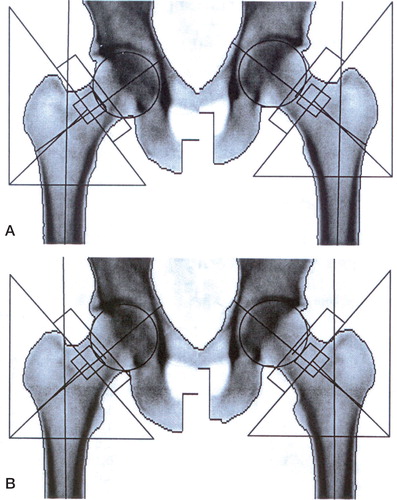Figures & data
Figure 1. Zero rotation position (A) and 10–15° external rotation position (B) in bilateral femoral DXA scans. In the latter, the external rotation shows the prominence of the lesser trochanter.

Table 1. Characteristics of patients. Values are mean (SD)
Table 2. Bone mineral density of the proximal femurs and heels, and Z-scores. Values are mean (SD)
Table 3. Bone mineral content and projected bone area at the proximal femur. Values are mean (SD)
Table 4. Body composition of the lower limb measured with DXA for 38 patients with unilateral osteoarthritis of the hip. Values are mean (SD)
Table 5. The effect of rotation of the proximal femur on BMD of the hip (rotation group, 21 patients, 42 hips). Values are mean (SD) in g/cm2